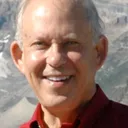Stay in the Loop
BSR publishes on a weekly schedule, with an email newsletter every Wednesday and Thursday morning. There’s no paywall, and subscribing is always free.
Marvelous midcentury
Dolce Suono presents ‘Rediscoveries: Festival of American Chamber Music II’

Most concertgoers are familiar with symphonic and choral works (Copeland, Bernstein) and song cycles (Barber, Rorem), but some devoted American composers wrote brilliant instrumental chamber music that somehow lost its place in the repertoire as the 20th century came to an end. To the great credit of the Dolce Suono Ensemble, its recent Rediscoveries: Festival of American Chamber Music II has restored some of this music.
American classical music was born out of the European head of Zeus in the mid-20th century, spurred on by the modernist explorations of Stravinsky, Ravel, Hindemith, and others on the continent, as well as the homeland inspirations of Ives, jazz, folk, spiritual, and theatrical idioms. It has faded in popularity over the last few decades, however. (These disappearances are not unusual in the history of music: Bach was almost forgotten for a hundred years.)
Revelations, not gimmicks
Dolce Suono provided stunning performances of well-selected compositions that were introspective, imaginative revelations in our current time of too much musical minimalism, alternating with formless spectacle and gimmicks. The concert began with Louise Talma’s Seven Episodes for Flute, Viola, and Piano, written in the “neoclassical” style advanced by Stravinsky and others. This 1987 composition veers in and out of tonality as it plays with rich counterpoint bolstered by staccato punctuations to provide a feast day of rhythmic challenges.
A profound expression
Three of the featured composers, George Rochberg, Ralph Shapley, and Richard Wernick, were local movers and shakers at the University of Pennsylvania. Rochberg was the iconoclastic chairman of Penn’s music department, a true rebel with profound musical intelligence. The death of his son in 1964 affected him deeply, and his self-transformation is reflected in Contra Mortem et Tempus for Flute, Clarinet, Violin, and Piano, composed a year later.
It is a profound musical expression of death, loss, and renewal, going well beyond lament and requiem to a profound introspection, like a patient on a therapist’s couch. As if struggling to renew his personal and musical center, Rochberg filled the piece with musical references to Mahler, Bartok, Varese, Ives, and others. Still, it retains a feeling of early Schoenberg as it explores modes and scales of the still-evolving tonal music. It’s almost brutally experimental, yet touches the listener’s heart thanks to the superb interpretive work of the musicians, especially clarinetist Yao Guang Zhai.
Wernick succeeded Rochberg at Penn and worked often with Leonard Bernstein. In 2013, he composed Pieces of Eight for Piano, a pianistic challenge which Charles Abramovic met with precision and panache for Dolce Suono. In one section, there was a startling version of Bach’s Chaconne (Violin Partita No. 2) that, depending on one’s point of view, could be heard as reverent or profane. Again, tonal and atonal (serial) music were played against one another as if the notes were "pieces of eight" (Spanish dollars) in a betting game.
Soulful and sophisticated
Walter Piston dominated the musical scene at Harvard for many years. His 1930 Sonata for Flute and Piano was heavily influenced by Schoenberg, giving flutist Mimi Stillman a chance to utilize all the chromaticism of her instrument despite a distinctly American (tonal) melody stated at the beginning, as if Piston were saying, “This is what Schoenberg could do with a tune.”
Leon Kirchner’s Piano Trio (1954) amply illustrated the need for these composers to be heard more frequently. Even while adhering to serial composition, this soulful music was given romantic beauty by violinist Miranda Cuckson and cellist Gabriel Cabezas, with haunting allusions to Samuel Barber in the slow movement.
Shapley, an upstart at Penn, wrote Four Etudes for Violin (1980), which could drive even talented performers to despair. Yet Cuckson delivered it with astonishing technical skill and interpretive sophistication, marking her as a master of the instrument and evoking wishes to hear her perform more often as a soloist.
Still vital
The influence of American cultural life was deeply felt in George Perle’s Sonata a Quattro (1982), in which he created a mood reminiscent of the poetry of E.A. Robinson and the paintings of Edward Hopper, an undercurrent of alienation and loneliness that emerged in American arts and letters as a reflection of a culture that had lost its roots.
By contrast, and as if to end with an air of optimism and popular taste, the concert concluded with a potboiler, Bernstein’s 1956 “Overture to Candide.” Thankfully, Abramovic’s exciting and compact arrangement for flute, cello, and piano did bring out a connection to the musical innovators who surrounded him.
Between the two parts of the concert, there was a panel discussion by the performers with guests James Freeman (conductor of Orchestra 2001) and Wernick, both of whom shared their memories of the composers. The panel’s sense of nostalgia reinforced the feeling of a bygone musical era, in contrast with the music itself, which is as vital today as it was in the furiously productive era when it was composed.
What, When, Where
Rediscoveries: Festival of American Chamber Music II. George Rochberg, Contra Mortem et Tempus for Flute, Clarinet, Violin, and Piano; Richard Wernick, Pieces of Eight for Piano; Ralph Shapley, Four Etudes for Violin; and others. Miranda Cuckson, violin and viola; Yao Guang Zhai, clarinet; Mimi Stillman, flute, piccolo, alto flute; Gabriel Cabezas, cello; and Charles Abramovic, piano. Dolce Suono Ensemble. March 31, 2019 at the Trinity Center for Urban Life, 22nd and Spruce Streets, Philadelphia. (267) 252-1803 or dolcesuono.com.
Sign up for our newsletter
All of the week's new articles, all in one place. Sign up for the free weekly BSR newsletters, and don't miss a conversation.

 Victor L. Schermer
Victor L. Schermer